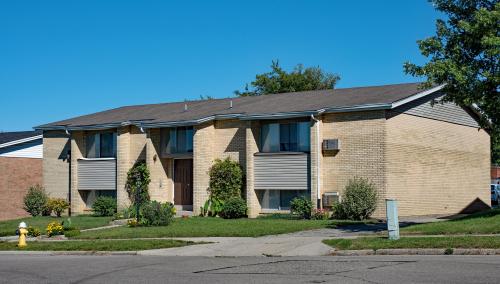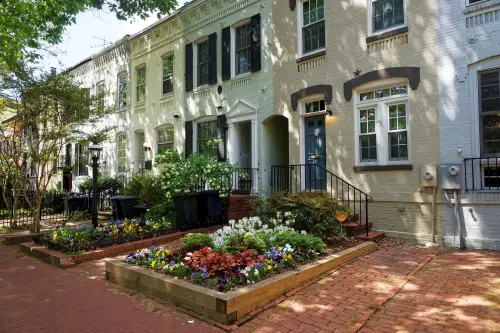Fixer Upper: How to Repair America’s Broken Housing Systems, by author Jenny Schuetz, is available for purchase.
The COVID-19 pandemic has intensified housing challenges across the country, especially for low- and moderate-income households. Housing prices and rents have risen more than 17% and 10%, respectively, over the past year—reflecting both historically strong demand and restrictions on new supply. Even as the overall economy recovers, upward pressure on housing costs is putting particular stress on renter households, who tend to be younger and lower-income than homeowners, with higher shares of Black and Latino or Hispanic families. Even before the pandemic, more than 10 million renter households were spending over half their income on housing.
In March 2021, Congress passed the American Rescue Plan Act (ARP) to help the U.S. economy recover from the pandemic. A key component, the State and Local Fiscal Recovery Funds (SLFRF), contains $350 billion that state and local governments can use to address ongoing challenges, including housing. SLFRF dollars provide more flexibility than most federal programs and can be used for a variety of investments and activities across multiple policy domains. This flexibility has both pros and cons: Local governments may be better able to match funds to needs than under narrowly prescribed programs, but it requires grantees to develop and implement well-targeted plans within a limited timeframe. Specifically, the Treasury Department guidelines require SLFRF dollars to be committed by December 31, 2024, with the remainder spent by December 31, 2026.
To get the most out of this once-in-a-generation opportunity, local governments need to assess their current needs and capacities, then determine the most cost-effective and feasible investments to address those needs. This piece outlines some guidance to help local governments start their planning process for using these funds to address the housing crisis in their own backyards.
Assess local housing needs and establish clear priorities
Even with ARP’s unprecedented scale, local governments will not have enough money to pay for every item on their wish list. Policymakers must be intentional about choosing investments, basing decisions on data whenever possible.
Each locality has different housing needs depending on population composition and current housing stock. Brookings Metro and the Aspen Institute have developed a tool, the Housing Policy Matchmaker, to diagnose local housing needs across several key dimensions: Are there enough homes to meet demand created by population and job growth? How expensive is housing in the community relative to income? Do existing homes have deferred maintenance needs, or require energy efficiency upgrades? The answers to these questions can point local leaders toward the most critical housing needs in their jurisdictions.
Because renter household incomes are typically about half that of homeowner incomes, most communities will find the need for rental support most urgent. Yet some communities, especially in older industrial cities and rural areas, have a substantial number of low-income homeowners. Whether owner-occupied or rented, these homes are prone to various health hazards and are environmentally unfriendly.
To address affordability, assess how the private market is meeting housing needs. Low-income households everywhere struggle with housing costs, but even middle-income households may face affordability challenges in high-cost places with too little market rate supply. Fast-growing communities need to increase their housing stock, while places with declining populations may place a higher priority on upgrading existing homes or addressing high vacancy rates.
Assessing which parts of the community are especially vulnerable to climate change will provide a guide to the locations best suited for housing investment. Funding should not be wasted building (or rebuilding) in places at high risk of recurring floods, fires, or other climate-related hazards. Diagnosing these local needs allows communities to efficiently fund projects that meet their unique housing challenges.
Take inventory of existing housing programs and local partners
Before building a new program from scratch, local governments should take inventory of both existing programs and potential partners. It’s much faster and easier to increase the budget for an existing program than start something new from scratch. Local housing programs that address high-priority needs and have demonstrated good results offer the best opportunity for expansion or replication with SLFRF dollars (see Figure 1). For example, Albuquerque, N.M.’s Rapid Re-Housing Program helps families who have experienced dislocation return to stable housing.

Understanding the gaps in existing local government programs or agencies is also important. Local governments that lack capacity or expertise in a particular type of work, such as property management or development, can seek out local partners with complementary expertise. In Tulsa, Okla., the nonprofit Revitalize T-Town offers housing repairs and weatherization services to low-income homeowners. Such local partners can be helpful resources in creating plans.
Creating new programs from scratch is expensive, often requiring staff hiring or training and establishing systems for administrative support and management. During the onset of the pandemic, many local governments struggled to quickly and effectively set up emergency rental assistance programs funded by the CARES Act. Coordinating with existing programs and partner organizations can reduce the front-end work and allow for more effective knowledge sharing.
Scope out costs for different activities
The housing policy interventions permitted under ARP vary in the cost of helping each additional household. Understanding the relative per-household cost of each activity will help local governments make strategic choices about how much funding to set aside for each activity. In general, new development has higher per-unit costs than acquisition and rehabilitation of existing buildings, and grants to owners of existing buildings for minor maintenance and upkeep is the cheapest. The costs of these activities can vary across places based on factors such as local land values and construction wages.
Table 1 summarizes the types of activities allowed under ARP. Some activities, such as emergency rental assistance or down payment assistance to first-time homebuyers, are structured as one-off grants. Others (e.g., operating supportive housing, locally funded vouchers) require long-term commitments.

Local governments should keep one eye on their long-term budgets as they plan new investments. ARP funds must be spent by the end of 2026—longer than a single budget cycle, but short relative to the life of a subsidized apartment building. Programs with the potential to be financially self-sustaining or that can align with longer-term funding streams offer some advantages.
Leverage other funding sources
ARP funds can stretch even farther when combined with other revenue sources: existing housing programs such as the Community Development Block Grant or Low-Income Housing Tax Credit; coordinated projects with other localities or state governments; or used to leverage private and philanthropic funds. Coordination of ARP funds limits the share of each recipient’s allocation that must be committed to projects and provides an opportunity to increase the scale of their initiatives. Staying informed about state-level housing initiatives also allows local leaders to use their funds in complementary ways.
Along with SLFRF, localities have access to other federal funds through ARP, such as those managed by the Economic Development Administration, Department of Housing and Urban Development, Department of Transportation, and Small Business Administration. The newly passed Infrastructure Investment and Jobs Act also adds to the list of funds that can be leveraged to advance local plans. Though these sources are not necessarily targeted toward housing, some programs support complementary goals, such as improving transportation access to low-income communities and broadband expansion.
Ambitious but attainable plans can help reduce housing stress
Rapidly rising housing costs are a significant source of financial stress for millions of Americans, especially low- and moderate-income renters. Communities that lack moderately priced housing to own or rent also risk losing jobs to more affordable communities, especially with the expansion of remote work.
ARP offers local leaders a once-in-a-generation opportunity to invest in expanding the stock of affordable, decent-quality housing. But to make the most of it, policymakers will need to develop a clear set of priorities and determine the most feasible and cost-effective investments within their toolbox.
The Brookings Institution is committed to quality, independence, and impact.
We are supported by a diverse array of funders. In line with our values and policies, each Brookings publication represents the sole views of its author(s).








Commentary
Getting the most out of American Rescue Plan housing funds requires local governments to plan ahead
March 2, 2022